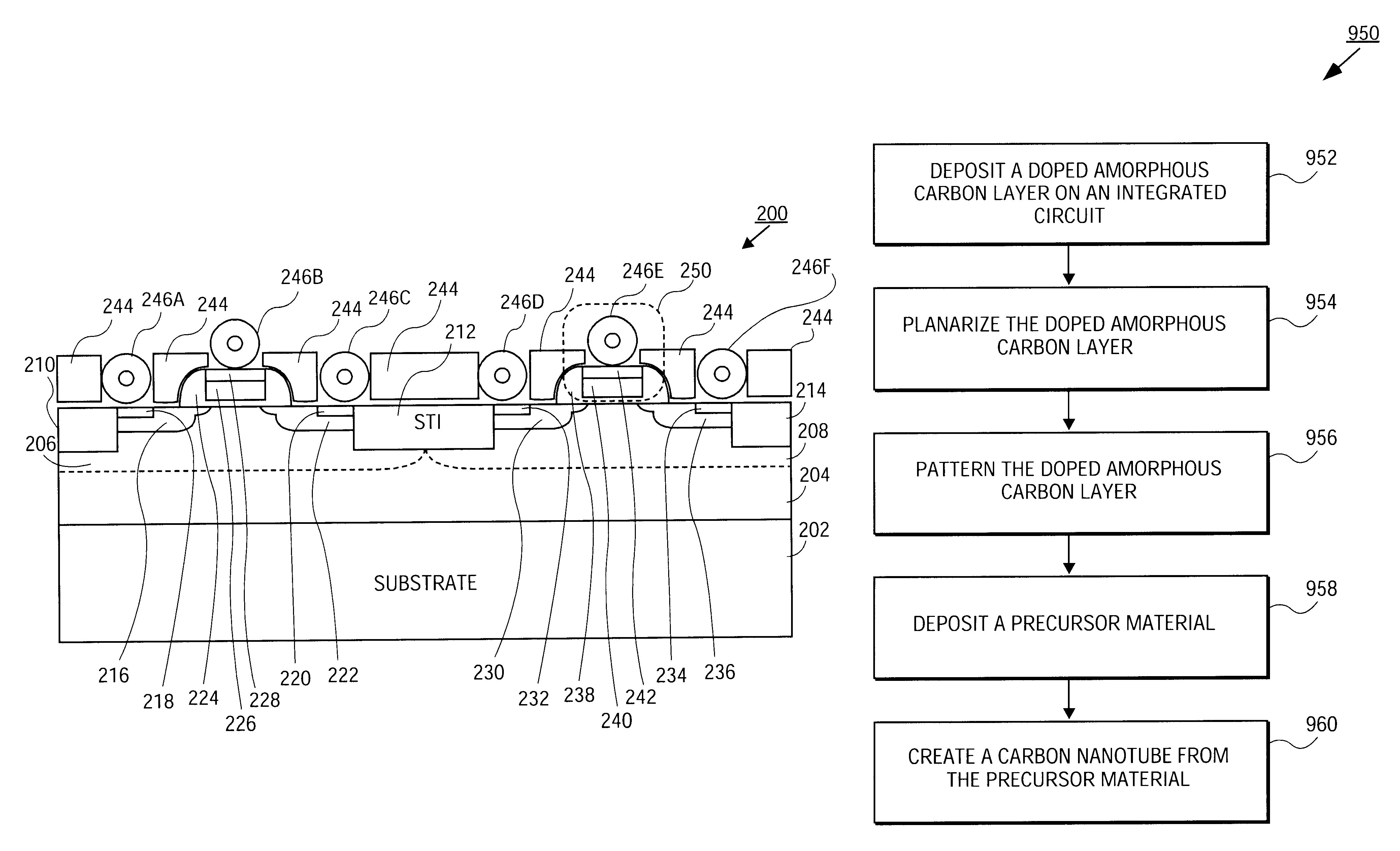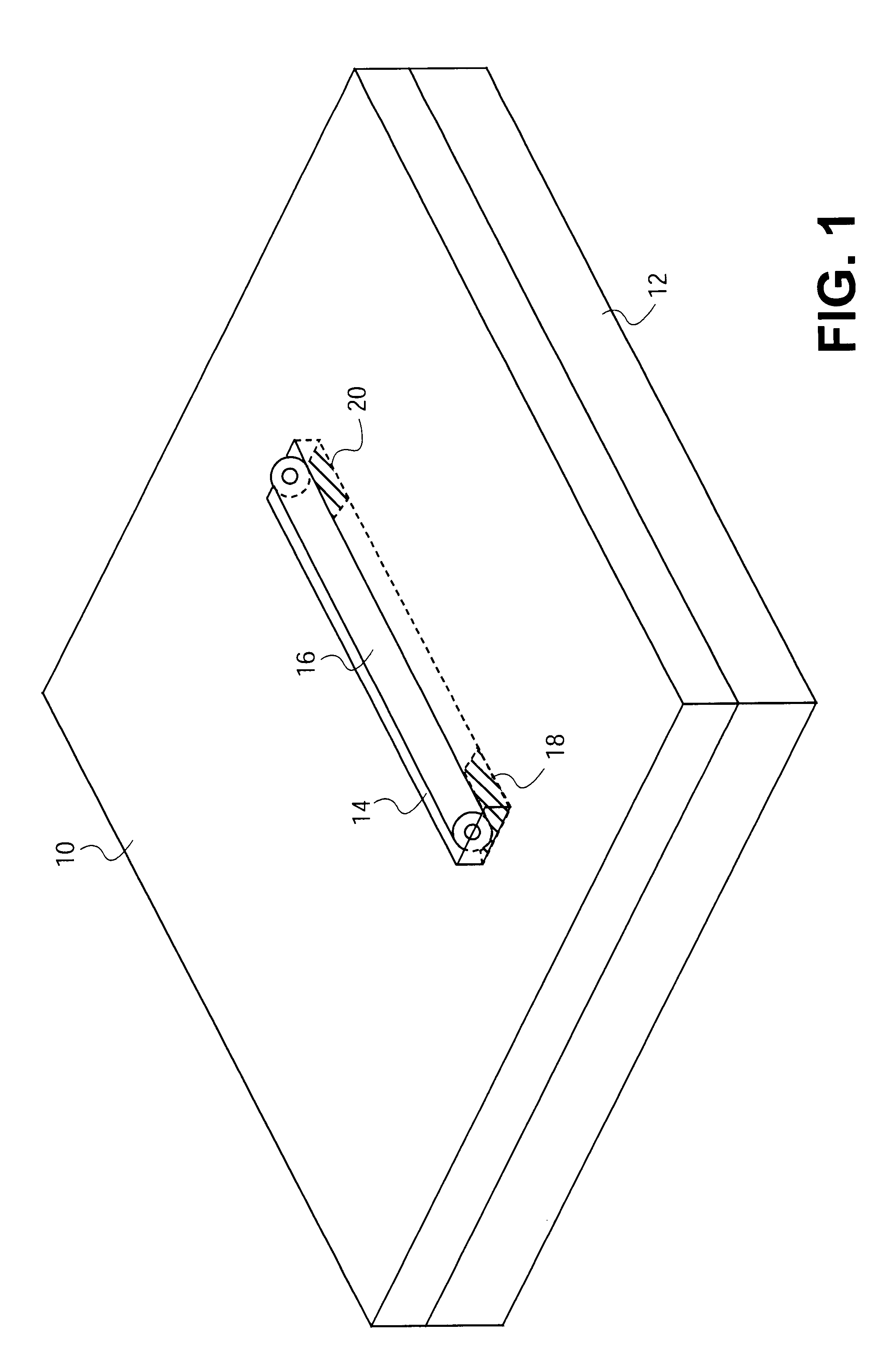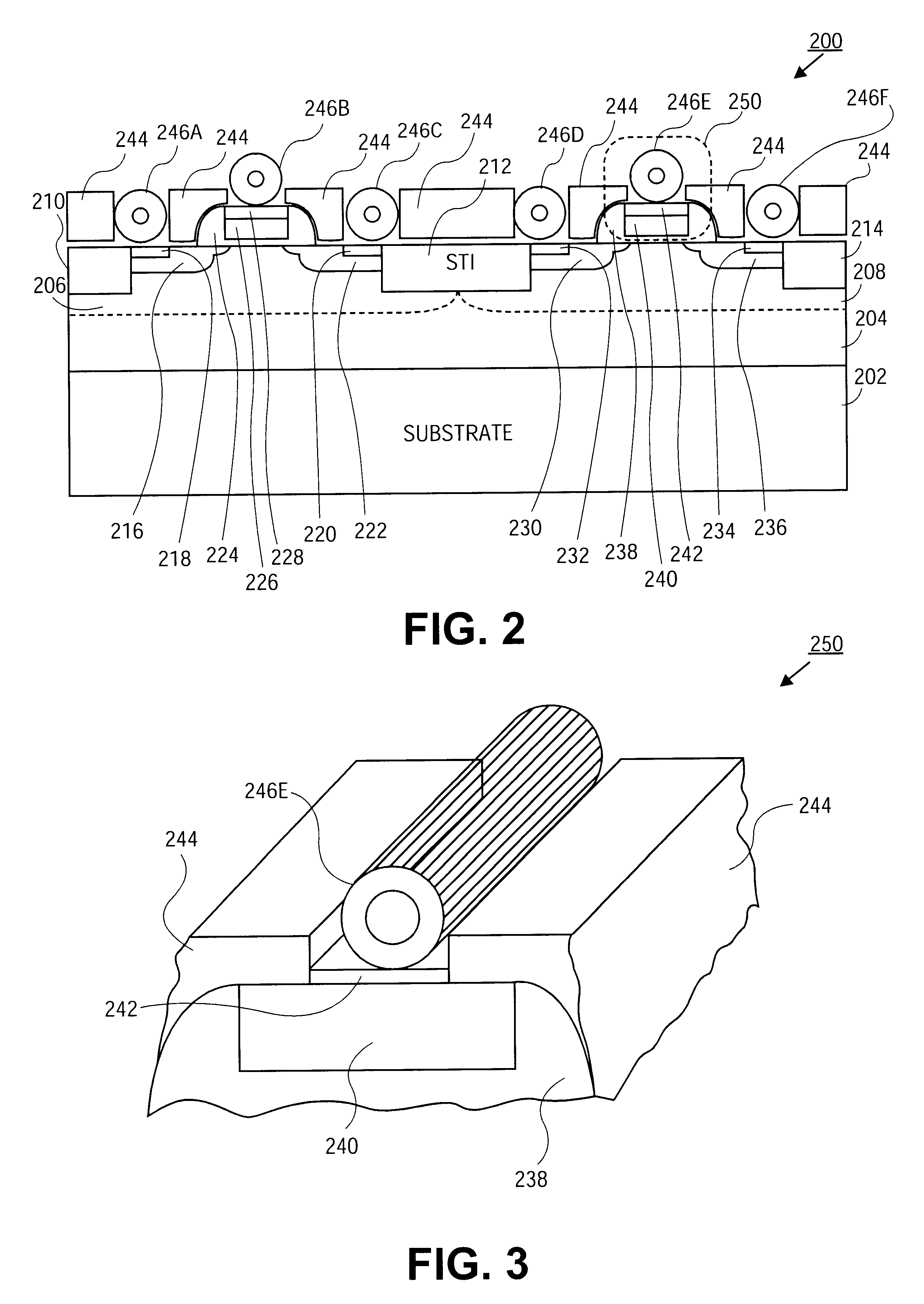Amorphous carbon insulation and carbon nanotube wires
a carbon nanotube and amorphous carbon technology, applied in the field of integrated circuit chip-level interconnections, can solve the problems of limiting the maximum data rate that is possible to achieve, copper diffusivity, and limiting the minimum achievable time constant previously
- Summary
- Abstract
- Description
- Claims
- Application Information
AI Technical Summary
Problems solved by technology
Method used
Image
Examples
Embodiment Construction
In the following detailed description, numerous specific details are set forth. However, it is understood that embodiments of the invention may be practiced without these specific details. In other instances, well-known circuits, structures, and techniques have not been shown in detail in order not to obscure the understanding of this description. These embodiments are described in sufficient detail to enable those of ordinary skill in the art to practice the invention. The following detailed description is, therefore, not to be taken in a limiting sense, and the scope of the invention is defined only by the appended claims.
Carbon nanotubes are used for interconnections on an integrated circuit, replacing existing copper interconnections. Carbon nanotubes conduct electrons ballistically--without the scattering that gives copper its resistance. Amorphous, carbon based (low dielectric constant) insulation is used to insulate the carbon nanotubes and has a dielectric constant lower tha...
PUM
| Property | Measurement | Unit |
|---|---|---|
| dielectric constant | aaaaa | aaaaa |
| dielectric constant | aaaaa | aaaaa |
| dielectric constant | aaaaa | aaaaa |
Abstract
Description
Claims
Application Information
 Login to View More
Login to View More - R&D
- Intellectual Property
- Life Sciences
- Materials
- Tech Scout
- Unparalleled Data Quality
- Higher Quality Content
- 60% Fewer Hallucinations
Browse by: Latest US Patents, China's latest patents, Technical Efficacy Thesaurus, Application Domain, Technology Topic, Popular Technical Reports.
© 2025 PatSnap. All rights reserved.Legal|Privacy policy|Modern Slavery Act Transparency Statement|Sitemap|About US| Contact US: help@patsnap.com



